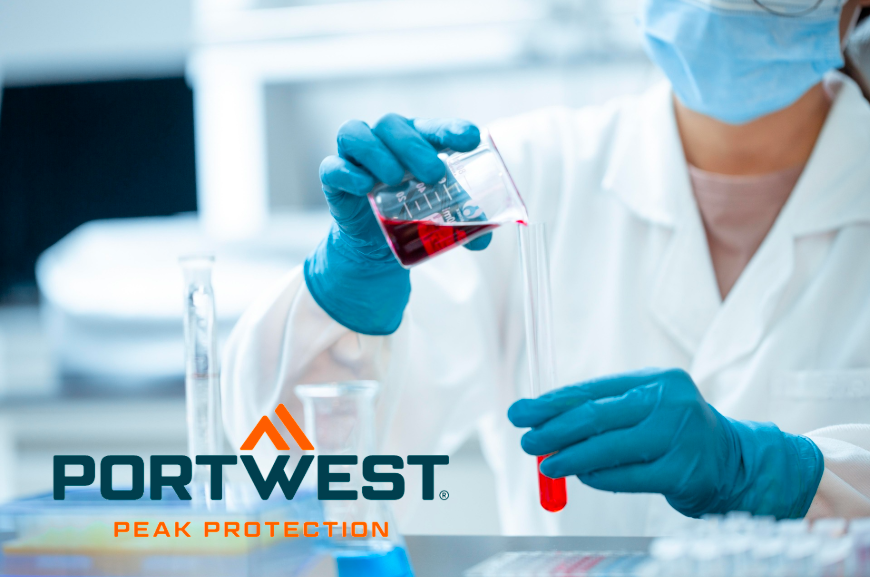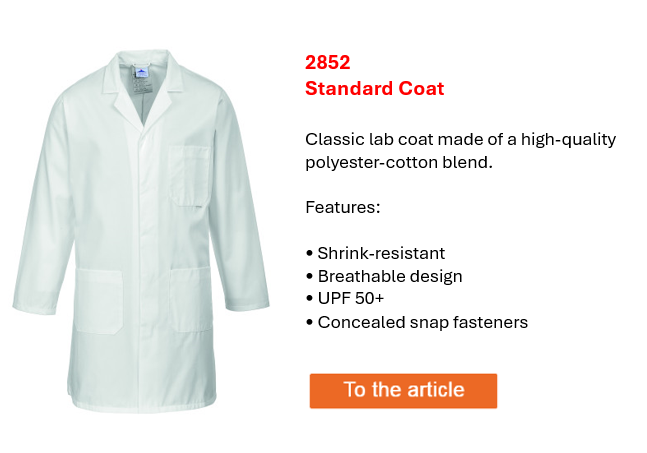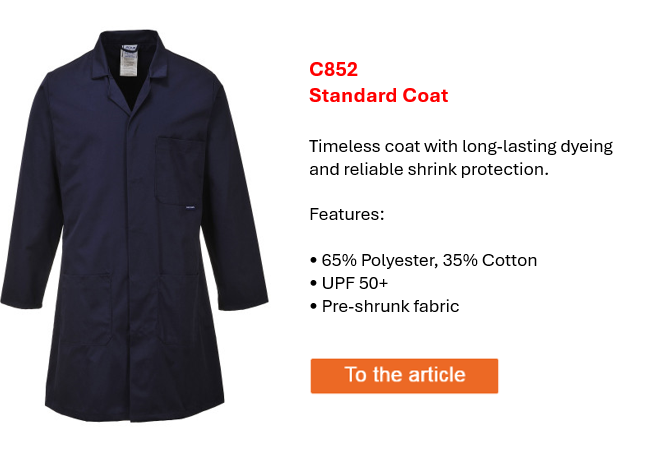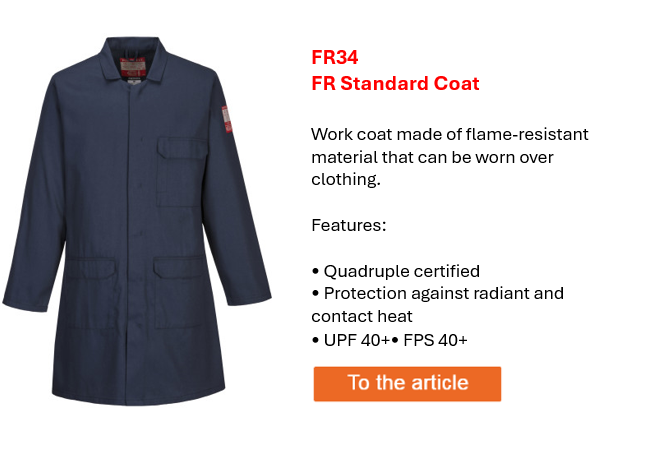When handling chemicals, in laboratories, and medical settings, a lab coat is a basic piece of equipment – not only as a protective measure, but also as a hygiene standard. However, not every lab coat is the same. Depending on the application, there are different materials, cuts, and safety features. In this article, you'll learn why a high-quality lab coat is essential and which factors play a role in the selection.
1. Why is a lab coat important?
Lab coats protect against chemical, biological, and physical hazards. They serve as a barrier against splashes, dust, or particles, minimizing the risk of contamination and injury. Especially in chemical or medical laboratories, reliable protection is essential to ensure the well-being and health of your team.
2. Materials and Protective Functions
Lab coats are available in various materials tailored to specific work areas:
Cotton:
Breathable and comfortable to wear, but without specific protection against chemicals.
Polyester-cotton blends:
Offer more protection and are more durable.
Specially coated fabrics:
Ideal for working with aggressive chemicals as they can repel liquids.
3. What features should a good lab coat have?
When purchasing a lab coat, you should pay attention to the following features:
Fit and comfort:
A coat that is too tight can restrict freedom of movement, while models that are too large can get in the way during delicate work.
Fasteners:
Snap fasteners or hook-and-loop fasteners allow for quick removal in an emergency and allow for easy donning and doffing.
Pockets:
Practical storage options for pens, notes, or small tools ensure you have your hands free and the most necessary items are always within reach.
Standards and certifications:
Pay attention to the safety standards such as EN 13034 for chemical protection or EN 14126 for biological protection that are required in your specific field of work.
4. Properly care for your lab coat
Our lab coats are made from pre-shrunk fabrics. This material dries quickly, is dirt-resistant, and retains its shape even after many washes. Work coats should be cleaned regularly to maintain their protective function and look neat. Most of the coats in our range can be washed at 60°C and will not lose their color even after frequent washing. You can find the individual washing instructions on the label inside the coat. If you have any questions, please contact our customer service!
A lab coat is much more than just a piece of clothing – it protects, ensures hygiene, and contributes to safety in everyday laboratory work. The right choice depends on the specific requirements of the work environment. Pay attention to the material, fit, and protective features to ensure you are optimally equipped!




























